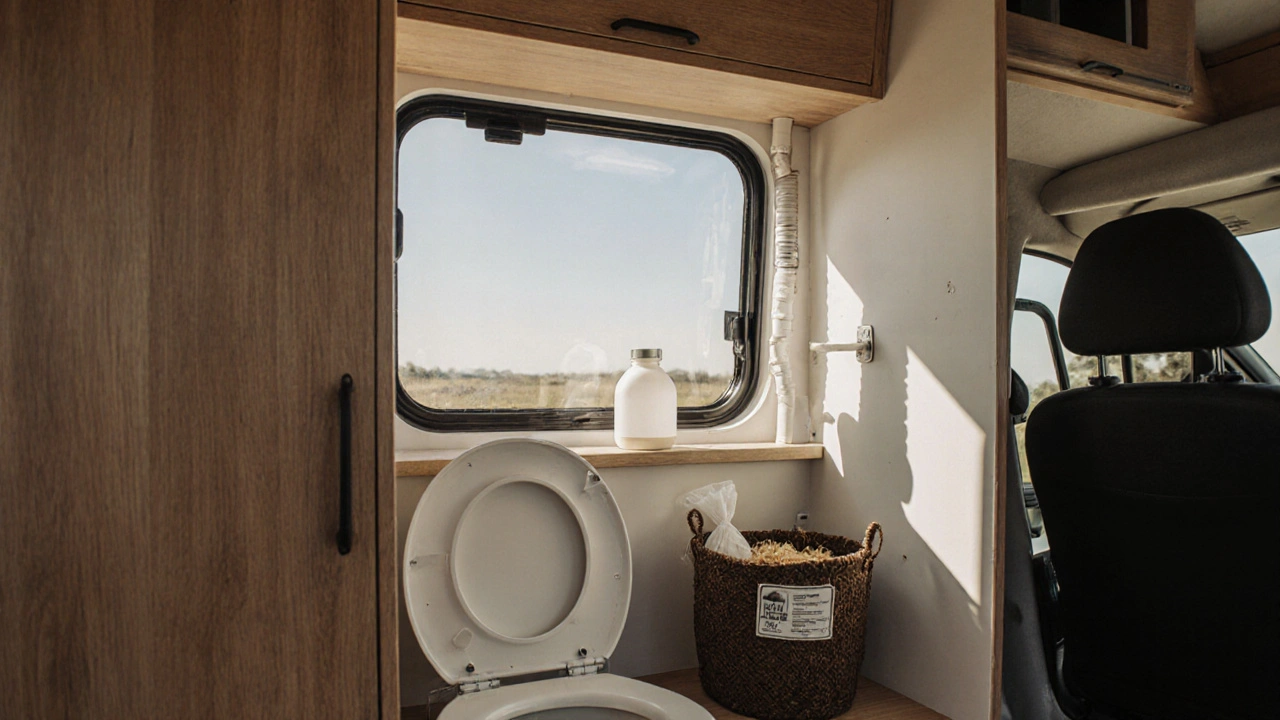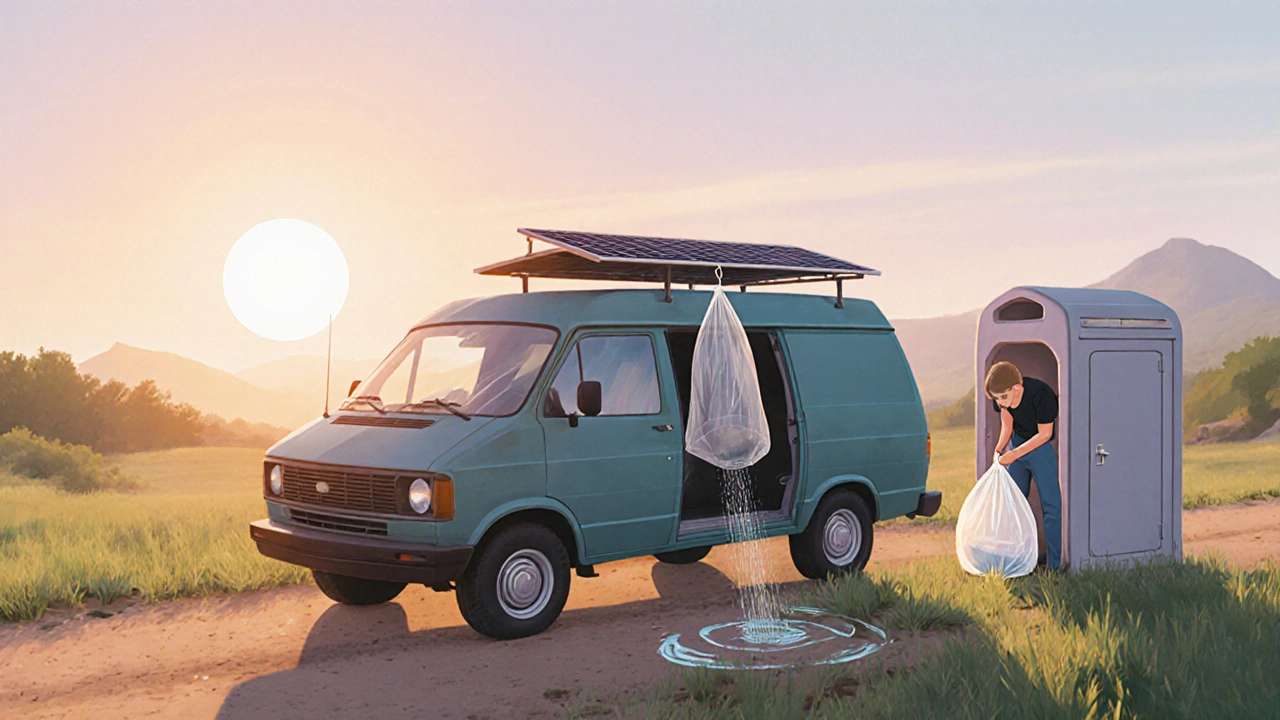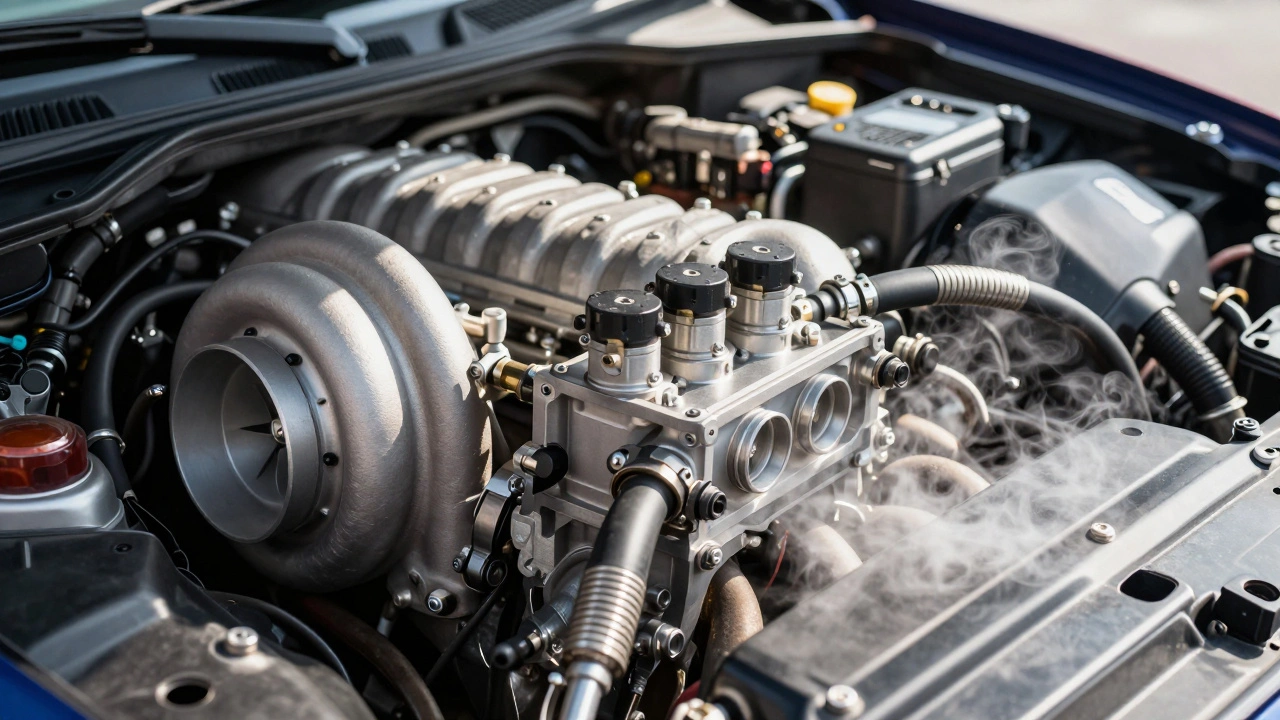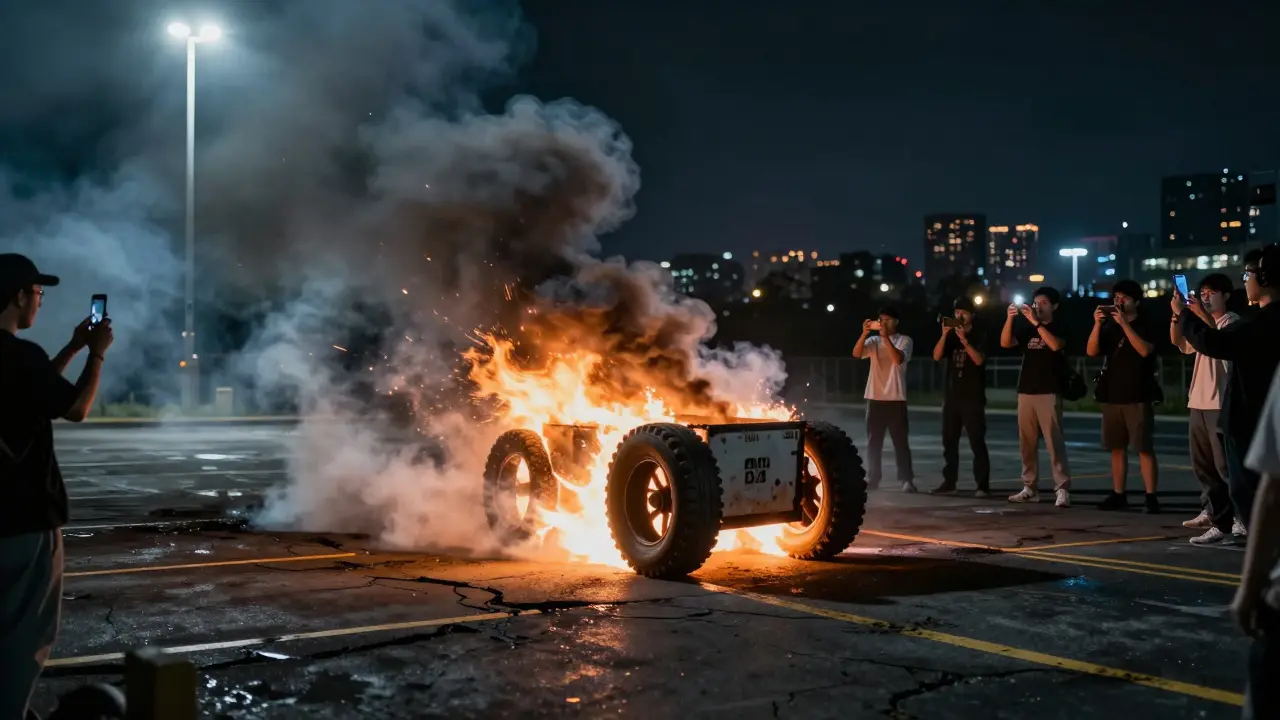Living full-time in a van sounds freeing-until you realize you’re carrying your own sewage. If you’ve ever stared at a full holding tank on a quiet roadside, wondering how to dump it without a campground, you know this isn’t just a plumbing problem. It’s a lifestyle challenge. The difference between a smooth van life and a messy one comes down to how you handle grey water and black water.
What Exactly Are Grey Water and Black Water?
Grey water is the used water from your sink, shower, and sometimes your washing machine. It’s not clean, but it’s not toxic either. It has soap, hair, food bits, and dirt. Black water is what comes out of your toilet. It contains human waste and is hazardous if not handled properly.
Most people think of RVs when they hear these terms, but vans are different. You don’t have a 100-gallon tank under the chassis. You have maybe 10 to 20 gallons total space to work with. That means you need smarter, smaller, and more efficient systems.
Why Standard RV Systems Don’t Work in Vans
RVs use big, rigid tanks connected to external dump stations. Vans? You’re often parked on dirt roads, forest edges, or city streets. You can’t just hook up a hose and dump. And even if you could, many places ban dumping grey water on the ground-even if it’s "just soapy water."
Plus, those big tanks add weight, take up space, and stink if they’re not emptied regularly. A 20-gallon black water tank full of waste? That’s 160 pounds of heavy, smelly liability. Most van builders avoid them entirely.
Grey Water Solutions: Simple, Clean, and Legal
For grey water, most van lifers skip tanks altogether. Here’s how:
- Direct drain to ground - Use a gravity-fed hose from your sink or shower drain. Let it flow onto soil, not pavement. Avoid dumping near trails, water sources, or campsites. Many national forests allow this if you’re 200 feet from any water body.
- Portable grey water bucket - A 5-gallon bucket with a spout and lid works great. Collect water after washing dishes or showering. Carry it to a designated dump station or pour it into a toilet at a gas station or rest area. Easy to clean, cheap, and legal almost everywhere.
- Biodegradable soap - This isn’t optional. Use soap labeled "septic safe" or "biodegradable." Dr. Bronner’s, Ecos, or Campsuds are common. Even if you’re dumping on dirt, harsh chemicals kill soil microbes and contaminate groundwater over time.
- Filter before draining - Install a simple mesh strainer over your sink drain. Catch food scraps, hair, and soap scum. Empty the filter into a trash bag. No clogs. No smells. No mess.
One builder in Oregon drains his shower water through a hose into a large ceramic pot filled with composting material. The plants thrive. The soil absorbs it. He never carries a tank. He doesn’t need to.

Black Water: The Real Challenge
Black water is where most van conversions fail. Traditional cassette toilets are bulky. Holding tanks stink. Dumping is a nightmare. So what do people actually use?
- Composting toilets - These are the gold standard. They separate liquid and solid waste. Solids break down with sawdust or coconut coir. Liquids drain into a small removable bottle (usually 1-2 liters). No chemicals. No odor. No dumping stations needed.
- Urine-diverting toilets - Even better. They split pee and poop at the source. Pee goes into a small bottle you empty into a toilet or storm drain. Poop goes into a compostable bag. After 3-4 weeks, the bag can go in a compost pile (away from food gardens). Brands like Nature’s Head and Separett are built for vans.
- Portable chemical toilets - These are temporary fixes. You fill them with blue liquid, use them, then dump into a campground toilet. They stink. They leak. They’re heavy. Avoid unless you’re only using it for a week or two.
- Bucket system - Yes, really. A 5-gallon bucket with a toilet seat lid and a compostable bag inside. After use, cover waste with sawdust or coffee grounds. Seal the bag. Store it in a ventilated box under the bed. Empty it weekly into a public toilet or compost bin. It’s low-tech, but it works.
A couple in Colorado uses a Separett Villa. They empty the urine bottle every 2-3 days. The solids bin lasts 4-6 weeks. They’ve never had a smell. They’ve never dumped at a station. Their system costs $1,200 upfront but saves them $200+ a year in campground fees.
Where to Dump If You Must
Some systems still need dumping. Here’s where you can legally do it:
- RV dump stations - Found at campgrounds, state parks, and some truck stops. Look for signs that say "RV Dump" or "Waste Disposal." Most charge $5-$15.
- Restrooms at Walmart or Cracker Barrel - Many allow you to dump grey water into their sinks or toilets if you ask politely and buy something. Black water? Not allowed.
- Public restrooms with sewer access - Libraries, city halls, and community centers often have clean, accessible toilets. Bring your own hose and gloves.
- Home disposal - If you have a house, use your own sewer line. Pour grey water into a sink. Empty black water into the toilet. No shame in that.
Never dump black water into storm drains, rivers, or ditches. It’s illegal in all 50 states and can lead to fines up to $5,000. Grey water? Check local rules. Some cities ban it on sidewalks. Others don’t care if it’s biodegradable.
Installation Tips for Van Builders
If you’re building your own system:
- Use flexible hoses, not rigid PVC. Vans move. Pipes crack.
- Install a vent line for your toilet. Without it, pressure builds and waste backs up.
- Keep all tanks and bottles easily accessible. You’ll be emptying them often.
- Label everything. "Grey In," "Black Out," "Urine Bottle." No confusion in the dark.
- Install a shutoff valve for your sink. Prevents accidental spills when driving.
Insulate your tanks in winter. Water freezes at 32°F. A frozen tank is a broken tank.

What Not to Do
These are common mistakes:
- Using dish soap with phosphates. Kills plants. Harms wildlife.
- Flushing wet wipes. Even "flushable" ones clog systems. They’re plastic.
- Leaving black water in the tank for weeks. It ferments. It smells. It becomes a biohazard.
- Using vinegar or bleach to clean tanks. It kills the good bacteria in composting toilets.
- Ignoring odors. A smell means something’s wrong. Check seals, vents, or airflow.
Real-World Example: A 2023 Ford Transit Build
A builder in Portland converted a 2023 Ford Transit with this setup:
- Grey water: Sink drains into a 3-gallon bucket under the sink. Bucket has a spout and lid. Emptied daily into a public toilet.
- Black water: Separett Villa composting toilet. Urine bottle emptied every 3 days. Solids bag changed every 5 weeks.
- Shower: Solar shower bag on the roof. Drains directly onto grass.
- Soap: Dr. Bronner’s Castile Soap.
He’s been on the road for 14 months. He’s never paid for a campground. He’s never dumped at a station. He doesn’t carry a single holding tank. His van smells like pine and earth, not sewage.
Final Thought: Simplicity Wins
The best van water system is the one you’ll actually use. Fancy tanks with sensors and pumps? They break. They cost money. They add weight.
Simple systems-buckets, composting toilets, biodegradable soap-work better. They’re lighter. Cheaper. Quieter. And they let you park anywhere.
You don’t need to be a plumber. You don’t need to spend $3,000. You just need to understand the difference between grey and black water-and choose a system that matches your lifestyle.
Can I dump grey water on the ground while van life?
It depends on where you are. On federal public lands like national forests, dumping biodegradable grey water at least 200 feet from water sources is usually allowed. In cities or state parks, it’s often banned. Always check local rules. Use biodegradable soap and avoid dumping on pavement or near trails.
Do I need a black water tank in my van?
No. Most successful van lifers skip black water tanks entirely. Composting toilets and bucket systems eliminate the need for holding tanks, dumping stations, and heavy, smelly waste. A composting toilet is lighter, cheaper, and more flexible than a tank.
What’s the best composting toilet for vans?
The Separett Villa and Nature’s Head are the top two. Both are urine-diverting, compact, and odor-free. Separett uses electricity for ventilation, while Nature’s Head is manual. Separett is better for long-term use; Nature’s Head is ideal for minimal power setups.
How often should I empty my grey water bucket?
Daily, if you’re using it regularly. Grey water can start to smell after 24 hours, especially in warm weather. Empty it into a public toilet, campground sink, or sewer line. Don’t let it sit-cleanliness prevents bugs and odors.
Can I use regular household soap in my van sink?
No. Regular soap contains phosphates, surfactants, and synthetic fragrances that harm soil and water ecosystems. Always use biodegradable soap like Dr. Bronner’s, Ecos, or Campsuds. It breaks down safely and won’t damage your composting system or the environment.
Is it legal to pee in the woods while van life?
Yes, if you’re away from trails, water sources, and campsites. The Leave No Trace principle says to urinate at least 200 feet from water and cover it with dirt. But if you’re near other people, use a toilet. Peeing in public view is rude and sometimes illegal. A urine-diverting toilet gives you privacy and control.






Scott Perlman
November 27, 2025 AT 08:37Just use a bucket and biodegradable soap. No tanks. No hassle. Works every time.
Sandi Johnson
November 27, 2025 AT 13:49Oh wow, a whole essay on how to not poop in your van? I thought we were just trying to avoid smelling like a sewer on a Tuesday. Thanks for the 2000-word guide on common sense.
Eva Monhaut
November 29, 2025 AT 03:27I’ve been living out of my van for three years now, and the composting toilet changed everything. No more dreading dump stations. No more stink. Just a quiet little system that turns waste into something useful. I use coconut coir and a sprinkle of cinnamon-yes, cinnamon-it masks odor and makes the whole process feel almost ritualistic. People think van life is about freedom, but it’s really about simplicity. The less gear you carry, the more you actually live. And honestly? The first time I emptied my urine bottle into a public toilet without shame, I felt like I’d finally grown up.
Tony Smith
November 29, 2025 AT 09:27While I appreciate the practical advice offered herein, I must respectfully emphasize the importance of regulatory compliance and environmental stewardship. Discharging grey water, even when biodegradable, may contravene municipal ordinances or federal land-use statutes depending on jurisdiction. It is incumbent upon the conscientious van dweller to consult local ordinances prior to any disposal activity. Furthermore, the use of non-certified composting systems may pose public health risks if not maintained with rigorous hygiene protocols. A standardized approach, though less glamorous, remains the most responsible path forward.
Rakesh Kumar
November 29, 2025 AT 10:39Bro, I came from India where we use buckets for everything-bathing, washing, even pooping in rural areas. So this van thing? Easy. I use a 5-gallon bucket with a lid, sawdust, and a plastic bag. I dump it at a temple toilet or a gas station. No fancy gadgets. No electricity. Just human ingenuity. You don’t need to spend $1200. You just need to stop overthinking it. Life is simple when you stop buying into marketing.
Bill Castanier
December 1, 2025 AT 00:36Grey water: bucket. Black water: composting toilet. Soap: biodegradable. Dump: public toilet. Avoid wet wipes. Vent your toilet. Insulate in winter. That’s it.
Ronnie Kaye
December 2, 2025 AT 00:52So let me get this straight-you’re telling me the best way to live free is to carry a bucket of poop under your bed? And you call that liberation? I mean, I get it. No campground fees. But now I’m basically a human compost heap with wheels. At least when I’m in a tent, I can just walk 50 feet and forget about it. This feels less like van life and more like a survivalist podcast gone wrong.
Priyank Panchal
December 2, 2025 AT 17:51You people are ridiculous. Why are you all making this so complicated? In my country, we don’t have fancy composting toilets or biodegradable soap. We use the ground. We use the bushes. We don’t ask for permission. If you can’t handle the real world, don’t call yourself a van lifer. Stop over-engineering everything. Just go. Do it. Don’t write a 10-page manual on how to pee.